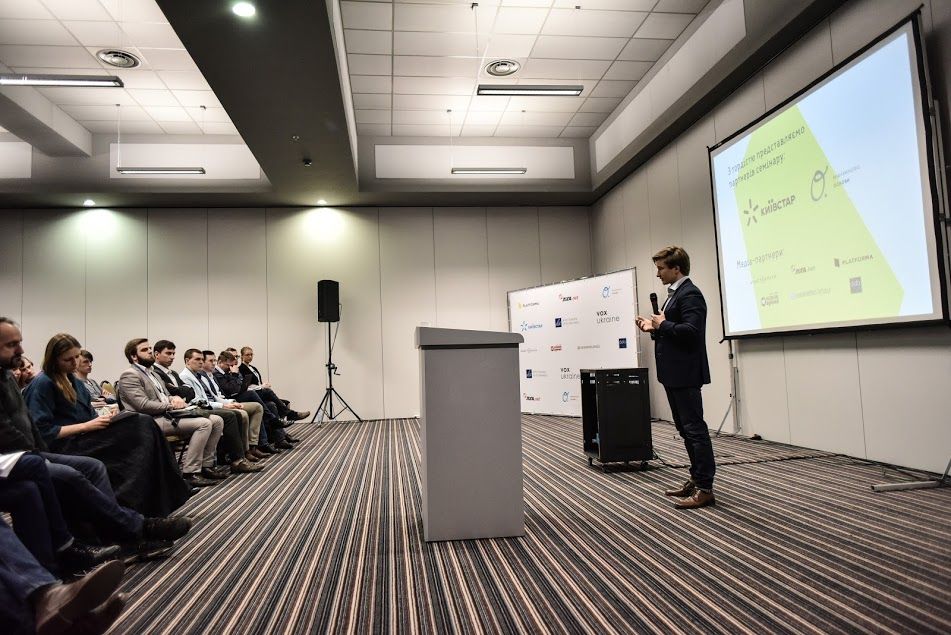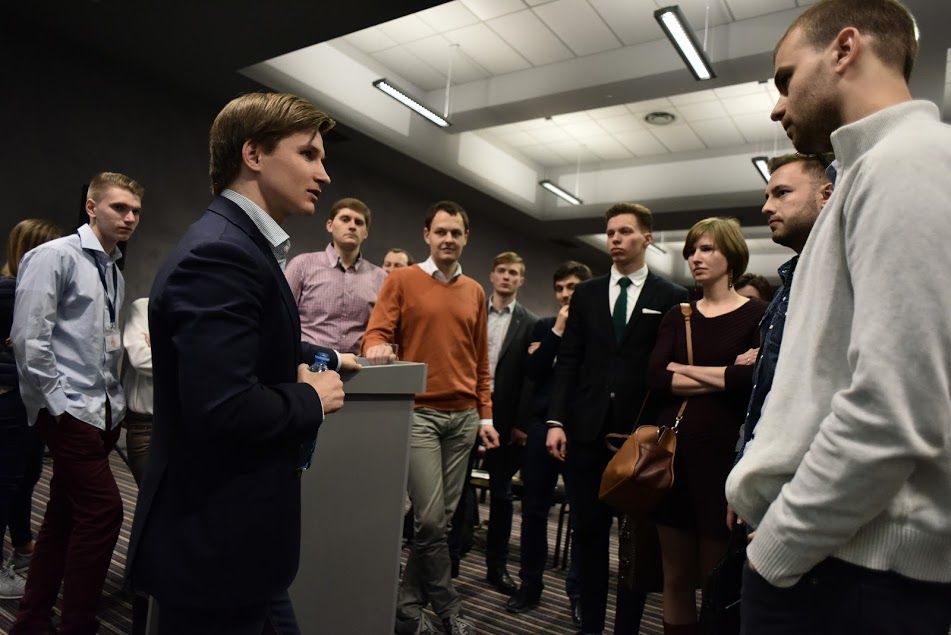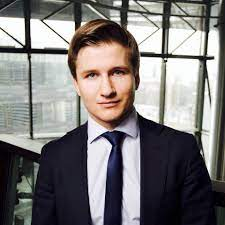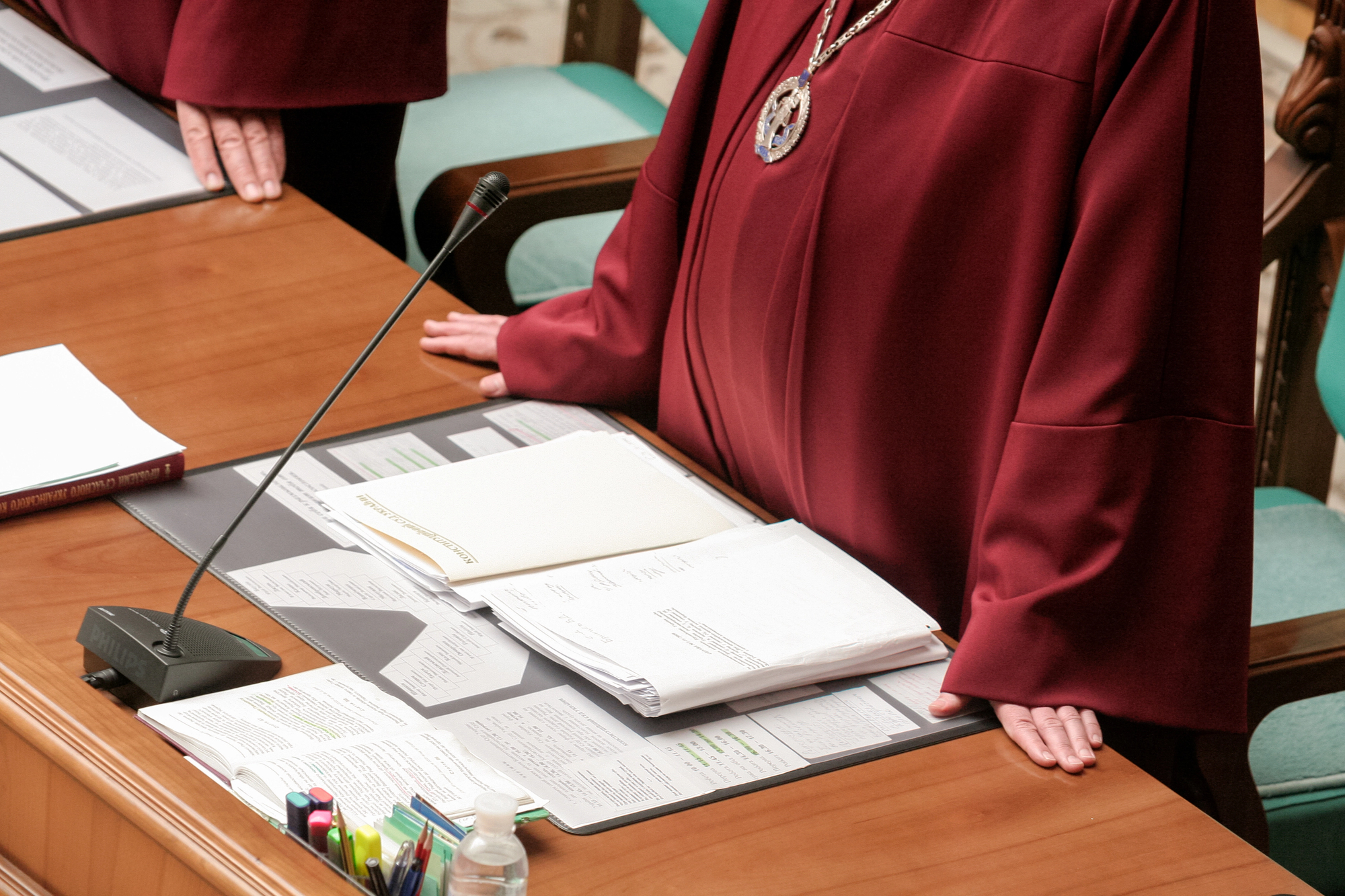In his lecture, Adomas Audickas talks about three models of SOE management and describes the model that he thinks would be best for Ukraine – a centralized holding company which would attract talented managers and minimize political interference. He also stresses the importance of government’s role as a referee rather than as a player.
Many people say that state ownership is evil, state business is bad, and also, people say that there is no progress in Ukraine. I disagree with these statements. If you look back 30 years ago – all business in Ukraine was state-owned, and now the share of SOEs is just a few percent – so the progress is huge. But relative progress is not so huge because other countries have moved much further. So right now you have to run very fast just to stay at the same place.
Three models of SOE management
The first is the traditional decentralized model currently operating in Ukraine. Under this model, ministries manage state-owned companies in their sector. For example, the Infrastructure Ministry manages railways and airports, the Energy Ministry manages power plants etc.
This model seems logical because if you have sectorial specialists within the ministry, it seems OK to let them manage sectoral SOEs. But this is very wrong wisdom because managing companies on behalf of shareholders requires absolutely different skills. It’s not sectoral expertise but corporate governance skills that are needed. Besides, for this model to be successful, internal capital markets (to evaluate success of SOE management) need to be developed. Also, sectoral ministries have to set proper incentives for the management of state-owned companies, they have to supervise them all the time etc. – and ministries usually don’t have the competence to do that because they cannot attract talent from the market. Look at private equity funds – their managers are very expensive people. We cannot have such quality people at each ministry, especially now, when average ministry salaries stand at $200. And salary is not the only reason preventing talented people from entering ministries.
Another drawback of this model is a conflict of interest. For example, a vice-minister of energy is responsible for liberalization of the electricity market and at the same time – for managing “Centerenergo”. He/she knows that upon liberalization the company will lose the competition to the private sector (so the profit of “Centerenergo” will fall implying that he/she is a bad manager). On the other hand, if liberalization is not completed, the efficiency of the entire sector will remain low. This creates the conflict of interest – because one person (or institution) is at the same time an enterprise manager and a policy maker.
In Ukraine, when ministries don’t get enough funds from the budget, they often view SOEs that they manage as a revenue source, and use cash flows generated by SOEs for other (non-profitable) projects, such as infrastructure. Hence, the companies do not understand whether they operate for profit or for other reasons.
The second model is the semi-decentralized model, when sectoral ministries manage state-owned enterprises but there is an institution which coordinates management of these companies in order to increase their efficiency – for example, it can introduce management standards or processes. Such an institution should operate under high standards of corporate governance and transparency on nominations. Many countries are using this model but I think it is not very efficient because this coordinating institution doesn’t have enough power since the ministries do not directly report to it.
We created this model in Ukraine, with the Ministry of economy becoming this coordinating institution and creating new rules for SOE management. However, compliance with these rules is an issue and MEDT does not have the authority to enforce them. For example, we started audits of major state enterprises. We passed a government decree to make sure large SOEs are audited by internationally reputable auditing firms and launched the process. However, there was large-scale resistance and sabotage on the side of the ministries. So out of 150 companies intended for audit only in 15 (10%) it was completed.
The third is the centralized model, which, in my opinion, is the best for Ukraine.
Under this model one institution manages all companies. The best examples in the world in terms of SOE management are Norway and Sweden, and both of them are using this model. The risk of this model is centralization of power in one hand. If, for example, a single ministry or a state agency is managing all SOEs, and some political group captures this state agency, then this political group will have a disproportional impact on the economy. Besides, a ministry or a state agency with their low salaries will not be able to attract competent people able to manage the state sector efficiently. And here, as well as in many other spheres, people are the key to success.
Therefore, I think, Ukraine should not go for a state agency under this model, but rather should create a holding company that will manage SOEs. The holding company has several advantages over state agency – its salaries are not limited by the law on civil service – so it can attract high-caliber professionals from the market. And second – the risk of capture is reduced because a holding company can attract independent international experts to its supervisory board and the nomination committee. This is not a failsafe solution; one can still appoint “bad” people to this holding company – but at least not terrible people.

The situation in Ukraine
Ukraine has 3 000 state-owned companies, and this sounds like a lot, but in reality there are only 100-150 big companies that matter (they constitute over 90% of combined SOE revenues). All other firms are small and have to be sold but in many cases we need special legislation for this.
People are usually misguided by this large number of companies and think that state-owned sector is huge, but it is not. If you look at France, Germany or Poland, you’ll see there a similar picture, with relatively few big companies and a score of small ones.
The performance of Ukrainian SOEs is poor, in 2014 their net loss amounted to $5 billion (3.7% of GDP).
Potentially, if managed properly, one could make at least $5-6 billion profits from these enterprises. We estimated this by looking at book value of assets (we don’t have the market value because there is no audit), and, taking into account that book value is highly undervalued, we applied average market rate of return to this book value.
2015 figures are not available yet, but preliminarily, SOEs loss decreased to about $700 million. Some part (about 50%) of this loss can be explained by non-commercial functions that SOEs perform. For example «Naftogaz» was buying gas at very high prices and selling it cheaply to households, which was clearly a loss-making business. But the other part of SOE losses is just pure inefficiency and corruption.

SOE problems
State-owned enterprises have the same problems as private business plus a few specific ones.
The first problem is information asymmetry (management knows the business much better than shareholders do, so it’s hard for shareholders to control the management). It is a key problem, but it can be tackled with proper corporate governance instruments.
The second problem (related to information asymmetry) is the principal-agent problem. Agents (management) have interests and incentives that differ from those of principals (shareholders, in the case of SOEs – taxpayers), so while managing an enterprise they may pursue their own interests rather than interests of shareholders.
In the private sector this problem is tackled by aligning incentives of managers and shareholders – for example, by introducing performance-based compensation schemes.
At the same time, expected loss for a wrongdoing (probability of getting caught times the cost of punishment – which is equal to lost salary if a person is fired plus fines if those are applied) for a manager should be sufficiently high to prevent him/her from opportunistic behavior. To increase this expected loss, one has to either increase the risk of being caught or increase the cost of punishment (in this case – the salary), or both. In Ukraine, managers of state-owned enterprises, although they are constantly involved in doing wrong things, are rarely caught or punished. So, theoretically, their remuneration (which they lose if they are fired) should be much higher than in the private sector – to compensate for this low risk. However, this would be unwise, so we should better raise the risk of being caught. For this we need to have strong internal controls, strong corporate governance, and we have to punish people if they do wrong things.
The third problem is specific for SOEs – it is unclear objectives (this problem is acute in many countries). In private business everyone knows that its objective is to make profits. In a state owned enterprise it is very different because some politicians believe that government-owned businesses should not only care about money, they should also care about social issues, national security issues and other. Indeed, state-owned businesses may have other objectives than making profit, but in this case these objectives should be stated very clearly, and it should be clear how to measure them (introduce KPIs). Independently of these other objectives, each SOE should necessarily have one major KPI – return on equity (or return on investment), and this return should not be lower than in the private sector.
Problem number four is especially relevant for Ukraine – it is the rule of law. The state should perform functions of a referee, not a market player. The state should create rules and enforce them. In Ukraine the reality is very different. To use a football analogy, not only does a Ukrainian referee engage in the game as a field player, but he also fails to observe the rules. This referee takes the ball into his hands, runs to the gates and says “goal”. When you wonder “Why is it a goal?” – He replies “Because I say so. I am the referee.” Until this problem is fixed, it doesn’t matter what kind of rules are in place – since nobody will be working according to them anyway.

A few remarks on privatization
Privatization is one of the most important initiatives that we started. But this does not mean that we intend to sell everything.
In my view, state assets should be managed according to three principles.
1) First, state ownership should be an exception rather that the rule. In each case the government has to understand why it owns certain company. If the only reason is “to make profit”, then this company should be sold – because the government is always a less efficient owner than a private one. Even in Sweden or Norway, where state property is run most efficiently, experts say that private sector is more efficient than state-owned one.
If there are other reasons for state ownership (e.g. national security or natural monopoly) – the state may want to keep the assets. In this case we come to the second principle: the ministries should not manage state-owned enterprises because they don’t have proper incentives and competences to manage these companies. They don’t have proper corporate culture, they cannot attract talent. Besides, when you look at Ukraine, the ministers of economy changed on average every 11 months, so there is no long-term planning either.
The third principle is that there should be a level playing field for both the state and the private sector. State-owned companies should not have any privileges when they compete with private sector. This means SOEs should have very clear objectives and KPIs.
Privatization is a very important initiative, and the main reason for poor results of this process so far is that the Ministry of Economy doesn’t have much authority over privatization. We set the strategy but we don’t participate in implementation, which is done by the State Property Fund. In my opinion, to effectively run the privatization process, there should be a new privatization agency with 10-12 people at most. Currently, SPF performs many functions and because of this, they cannot focus on things that are really important.
Report of the 2-day seminar “Microeconomics from insiders: firms, markets and state regulation” with photos, videos and lecture notes can be found here.
Lecture of Max Nefyodov “ProZorro: Revolution in State Procurement” (in Russian)
Lecture of Volodymyr Bilotkach “With Good Intentions, or Why Governments Seek to Regulate Markets and Where This Leads” (in Ukrainian)
Lecture of Tymofiy Mylovanov “Auction for Everyone: Do Ukrainians Have to Choose between Growth and Justice” (in Ukrainian)
Застереження
The author doesn`t work for, consult to, own shares in or receive funding from any company or organization that would benefit from this article, and have no relevant affiliations



